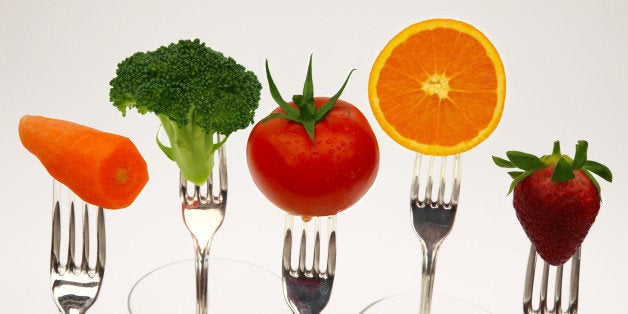
The average American adult consumes the equivalent of about 32 teaspoons of sugar per day. Sugar is really the number one food additive: it is added to drinks, often in the form of high-fructose corn syrup, to bread, sauces, dressings, and to all kinds of processed foods including many low-fat products.
Cutting down sugar in your diet may be one of the best actions you can take to improve your health and your weight. And you don't need to have tremendous amounts of willpower or to go cold turkey (unless you want to do this, of course).
Here are four steps to help you cut down sugar in your diet. You'll want to follow the steps in order, except for step four which can be taken whenever you want.
1. Give yourself 30 days (or more)
There is mounting evidence that sugar can be addictive. But if you have strong cravings and you feel you're addicted to sugar, don't get discouraged.
Many people will try to convince you that breaking an addiction is very hard because of hormones and neurotransmitters in your brain, but this attitude can actually be quite disempowering. In fact, breaking an addiction is perfectly doable with the right approach. I have personally helped quite a few women do it with great success.
Your best bet is to use a gentle, step-by-step process that gives your body and your taste buds time to adapt. The mistake many people make when they decide to get off sugar is they want to be perfect from day one, so they go cold turkey and cut out sugar completely from the beginning.
While this may work for people with a very strong addiction, in my real-world practice with women who have a rather mild sugar addiction, I've seen that a compassionate, gentle approach works far better.
Start by believing that you can do it and make a commitment to give it all you've got over a period of time that feels realistic to you.
2. Identify your #1 source of sugar and start there
Think about everything you eat and drink and identify your main source of sugar. Usual suspects are sodas or other sweetened beverages, sugar you add yourself, and processed baked foods.
It may be you're drinking a lot of commercial fruit juices, carbonated sodas, or hot sweetened beverages. Or it may be you're adding four teaspoons of sugar to your tea or coffee and you eat sugary snacks, sweetened yogurt or dessert at every meal. Or it may be you're eating processed bread, cakes and cookies several times a day.
Once you know what to cut down, make a plan. If you've been adding three teaspoons of sugar to your tea or coffee, gradually reduce to two within a week, then one within the next two weeks.
If you are currently drinking at least two large bottles of soda a week, start by cutting down to one and a half bottle, then one bottle the next week, then half a bottle, and see if you are comfortable with cutting out soda entirely.
The key is to be excited about cutting down your consumption and not experiencing it as frustration and deprivation or making a point of reaching an imaginary level of perfection.
Once you've cut down your main source of sugar, you may already enjoy some improvement in your weight and your energy levels.
3. Eat more real food
Sure, the list of processed foods is a never-ending one. And sugar often hides in cakes, cookies, candy bars, ice cream, popcorn, pretzels, granola or fruit bars, energy bars, dressings, sauces, and condiments.
"Low-fat" or "no-fat" foods are often marketed as healthy but most of the time they have also been processed and fat has been replaced by hidden sugars or artificial sweeteners.
If you eat a lot of junk food and processed foods, start by replacing them with real food, one step at a time. If you cook and prepare your food yourself, you'll dramatically cut your sugar intake over time. Do this over thirty days or more, following the same gentle approach as mentioned earlier.
Once you've cut down processed foods, you may realize that your sugar cravings are gone and that you've even managed to kiss your sugar addiction goodbye.
4. Sleep your cravings away
Whenever someone tells me she needs to eat six times a day and she has strong sugar cravings, the first question I ask her is how many hours she sleeps at night. Many times, the answer is less than five or six hours.
So what would sleep have to do with cutting down sugar? Well, it will help by reducing your cravings for sugar as well as processed foods that contain sugar.
Different studies have found that sleep deprivation of two hours or more of the recommended seven to nine hours of sleep leads to overeating and junk food cravings.
Sleep deprivation also leads to sweet foods being more appealing to adolescents, with a consumption of sweet/dessert servings up to 52% higher, and to an increased intake of food in men as well as cravings for calorie-dense foods in adults.
This is why a proper amount of sleep can be a great way to curb cravings, which will also help you cut down sugar in your diet over time.
Anne Ricci is dedicated to helping women make healthy food choices, boost their energy and feel good in their body. You can join her tribe at AnnesHealthyKitchen's Community.